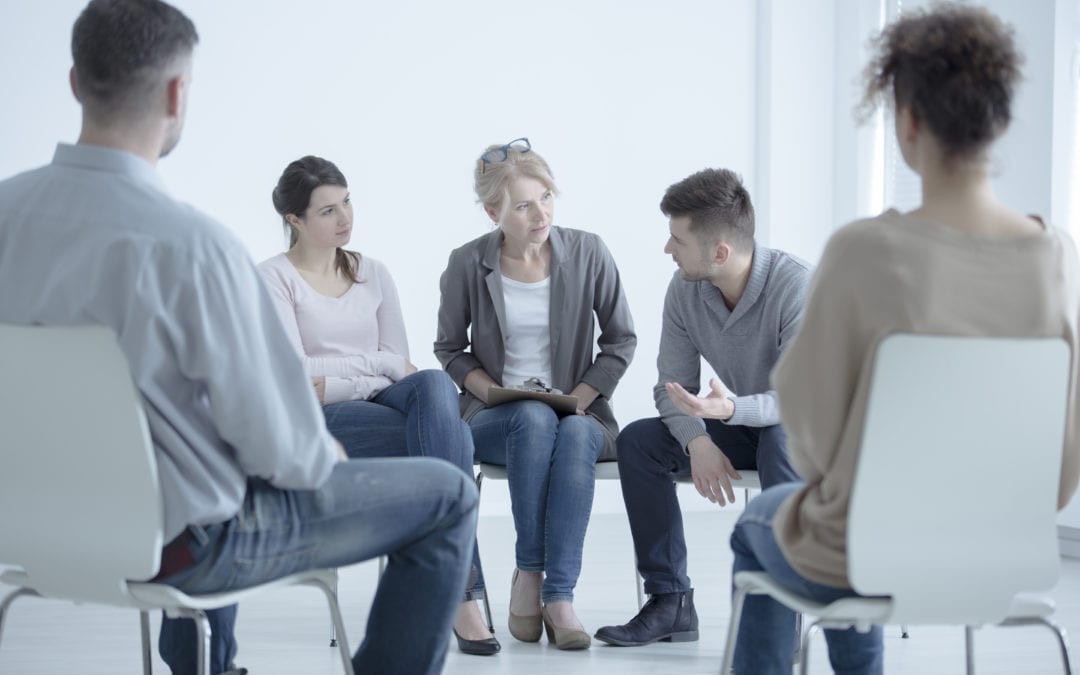Read time: 4 minutes
TL;DR
- All humans are subject some form of a traumatic situation that has far-reaching consequences. Everybody deals with trauma differently and raising trauma awareness is a great way to increase support for people who experience traumatic events.
- There are eight different types of trauma, which include natural traumas, human-cased traumas, group traumas and more.
- When receiving treatment for a trauma, retraumatization can occur. Victims feel like they are undergoing another traumatic event. This can happen unintentionally in clinical or treatment settings.
- Trauma resilience is the ability to heal from traumatic events and thrive in spite of negative life experiences. Most people are resilient in the face of traumas, but the ability to thrive is related to many individual, situational and contextual factors.
Trauma Awareness and Resilience
Facing a traumatic situation has far-reaching consequences. There are many factors that impact how people respond in such situations; raising trauma awareness is a great way to increase support for people who experience traumatic events. Learn more about trauma awareness and resilience to get a better idea how to support survivors of traumatic injuries and their caregivers.
Types of Traumatic Experiences
Trauma occurs in many shapes and forms; dividing them into categories helps clarify the differences and allows common characteristics to emerge. Keep in mind that the categories often overlap and traumas may fall into more than one category. Here are the basic types of traumatic experiences:
- Natural traumas
- Human-caused traumas
- Individual traumas
- Group traumas
- Community traumas
- Mass traumas
- Interpersonal traumas
- Developmental traumas
Natural Traumas
Traumas are classified as natural if they are caused by natural events. This may be something limited in scope, like a tree falling on a car, or broad in scope, like a hurricane. They are typically unavoidable and sometimes called “acts of God.” Survivors respond to traumatic natural events in large part based on the following factors:
- Extent of losses
- Amount of devastation
- How long it takes to reestablish daily activities, services and routines
- Duration, amount and accessibility of relief services
- Presence of outsiders viewed as a threat
Human-Caused Traumas
On the other hand, human-caused traumas are the result of human failure or design. They may be unintentional or intentional; how intentional the trauma was greatly impacts the subsequent reaction. Events viewed as intentionally harmful are often more traumatic for the people who experience them. Even unintentional human-caused events often create more feelings of anger and frustration than natural events because survivors may feel like there was a lack of protection or that something should have been done differently.
Individual Traumas
Traumatic events that happen to an individual are called individual traumas; these include single events and multiple traumatic events. Although the traumatic event happens to one person, the people around that individual are often impacted as well. Survivors of individual traumatic events are less likely to receive adequate support and concern from others. They may feel shame about the event and not want to reveal the traumas. This makes them more likely to feel isolated.
Group Traumas
Group traumas are traumatic events that impact a specific group of people, such as first responders or military service members. Members of the group often share similar identities, histories, activities and concerns. Survivors are more likely to encounter repeat traumas and tend to keep their experiences inside the group. People who aren’t part of the group are generally considered outsiders and not expected to understand the traumatic experiences that group members share. Members may encourage each other to repress traumatic experiences and not seek help, fearing that doing so is a breach of group confidentiality and shames the whole group. However, groups may also provide strong, supportive environments for dealing with traumas if they have adequate resources.
Community Traumas
This type of trauma impacts communities and cultures and erodes the sense of safety in a community or the heritage of a culture. Traumatic community events include a wide range of atrocities, violence and indifference. Historical traumas are a type of community event widespread enough to influence an entire culture, often into future generations. Historical traumas have broad repercussions and can increase the vulnerability of future generations to traumatic events.
Mass Traumas
Mass traumas impact large numbers of people and may be either natural or human-caused. They often cause widespread disruption and significant loss of property. Responding to such situations often exceeds the capability of the affected area. One common problem with mass traumas is that there isn’t time to process the first traumatic event before another one occurs. If the initial event creates widespread destruction, it often sparks a chain reaction of additional traumas.
On the other hand, mass traumas tend to foster a strong sense of community and support, getting rid of the isolation common with other types of traumatic events. Survivors are more likely to ask for help and receive support.
Interpersonal Traumas
Traumatic events that occur between people who know each other are called interpersonal traumas. These traumas often continue to reoccur and include sexual assault, physical and sexual abuse, elder abuse and domestic violence. The victim may continue to suffer traumas while seeking treatment.
Developmental Traumas
Developmental traumas happen during a specific developmental stage and impact future development. They are commonly related to adverse childhood experiences, but also include other events with life-changing consequences.
Retraumatization
Sometimes victims feel like they are undergoing another traumatic event in a situation known as retraumatization. This can happen unintentionally in clinical or treatment settings. Agencies that help people deal with traumatic experiences should actively work to reduce the possibility of retraumatization through policies and programs designed to be sensitive to the needs and histories of people who suffered from traumas.
Trauma Resilience
Trauma resilience is the ability to heal from traumatic events and thrive in spite of negative life experiences. Most people are resilient in the face of traumas, but the ability to thrive is related to many individual, situational and contextual factors. General characteristics that encourage resilience include:
- Flexibility
- Spiritual and religious beliefs
- Humor and creativity
- A sense of heritage, history and tradition
- Warm personal relationships
- Ability to experience positive emotions
- Sense of self-efficacy
Although there’s no way to prevent traumas from occurring, raising trauma awareness helps survivors get the assistance and resources they need to heal after traumatic events.

